UPDATE ON LONGLINES IN FLORIDA’S EAST COAST CLOSED ZONE
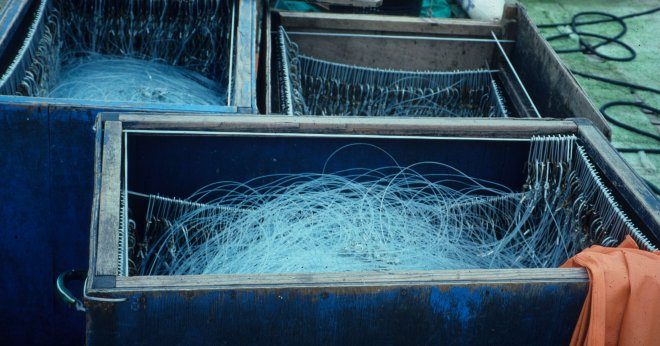
The NMFS has extended the deadline to March 29, 2017 for accepting public comments on the application for an Exempted Fishing Permit. If approved, six pelagic longline vessels will fish for three years in Florida’s East Coast Closed Zone. Email your comments to [email protected]. A webinar on the subject is scheduled for March 27, 2017 between 1 – 4 pm (EST) to facilitate public comments from across the U.S. commercial Atlantic Pelagic Longline fishery. Join the webinar here. TBF’s submitted comments are posted here with a draft letter you may draw from to write your comments. Help TBF fight this direct threat by submitting your letter
CALL TO ACTION: NO LONGLINES IN CLOSED ZONE
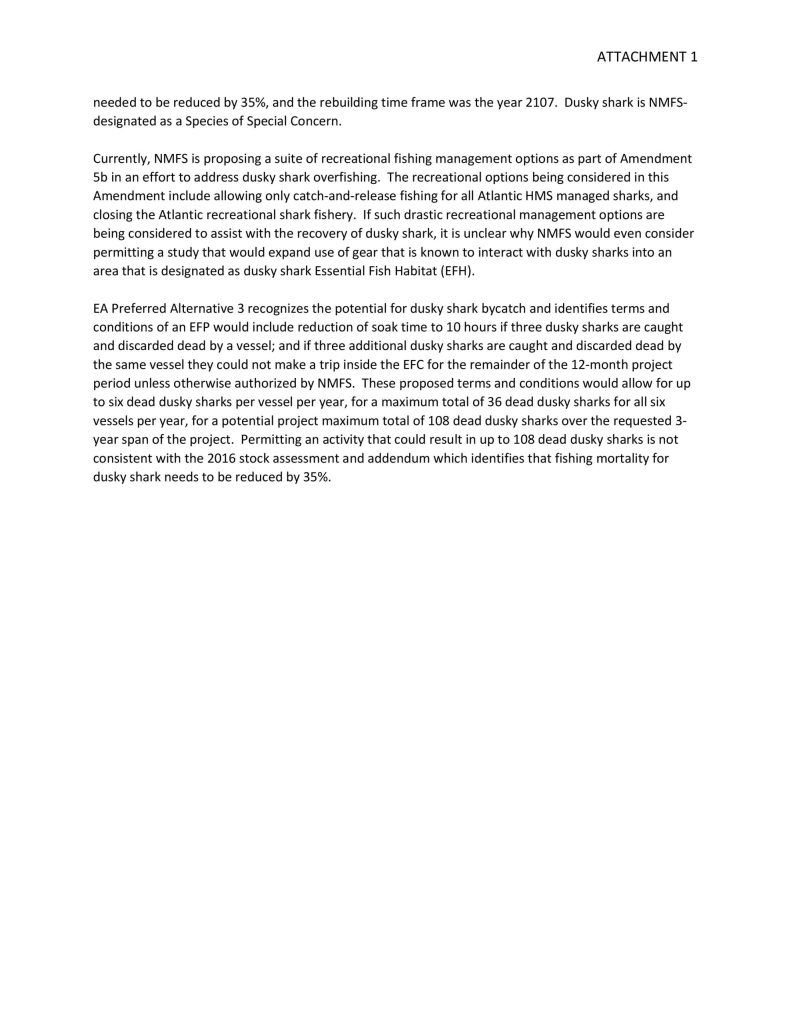
The Florida Fish and Wildlife Commission also opposes this, read their official comments below. Recently, the NMFS received an Exempted Fishing Permit (EFP) application from Dr. David Kerstetter, Nova Southeastern University, to authorize a research project using 6 longline boats within Florida’s East Coast Longline Closed Zone. The project proposes to evaluate the effectiveness of the 16 year closure by comparing fishing results in the closed waters to results in open waters. Fish caught during the research period would be sold to offset expenses. The zone was closed in 2001 to protect juvenile swordfish primarily and other species taken
Call to Action: No Longlines In Closed Zone
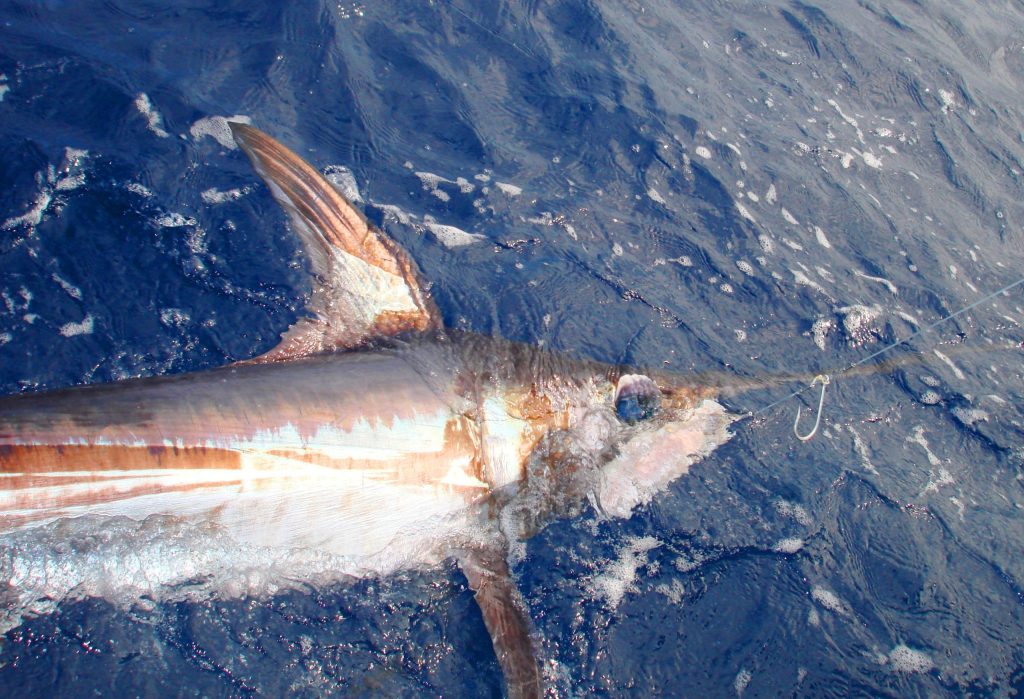
The Florida Fish and Wildlife Commission also opposes this, read their official comments below. Recently, the NMFS received an Exempted Fishing Permit (EFP) application from Dr. David Kerstetter, Nova Southeastern University, to authorize a research project using 6 longline boats within Florida’s East Coast Longline Closed Zone. The project proposes to evaluate the effectiveness of the 16 year closure by comparing fishing results in the closed waters to results in open waters. Fish caught during the research period would be sold to offset expenses. The zone was closed in 2001 to protect juvenile swordfish primarily and other species taken
TBF SUBMITS COMMENTS ON AMENDMENT 5B – DUSKY SHARKS

The Billfish Foundation (TBF) recently submitted comments to the proposed regulations included in Amendment 5b to the Consolidated Atlantic Highly Migratory Species Fishery Management Plan – regarding the reduction of dusky shark mortality. Learn why the current preferred measures for recreational fishing as written will have direct, and significant, negative impacts on non-shark recreational fisheries. Read our comments
TBF SUBMITS COMMENTS ON THE PACIFIC BLUEFIN FISHERY
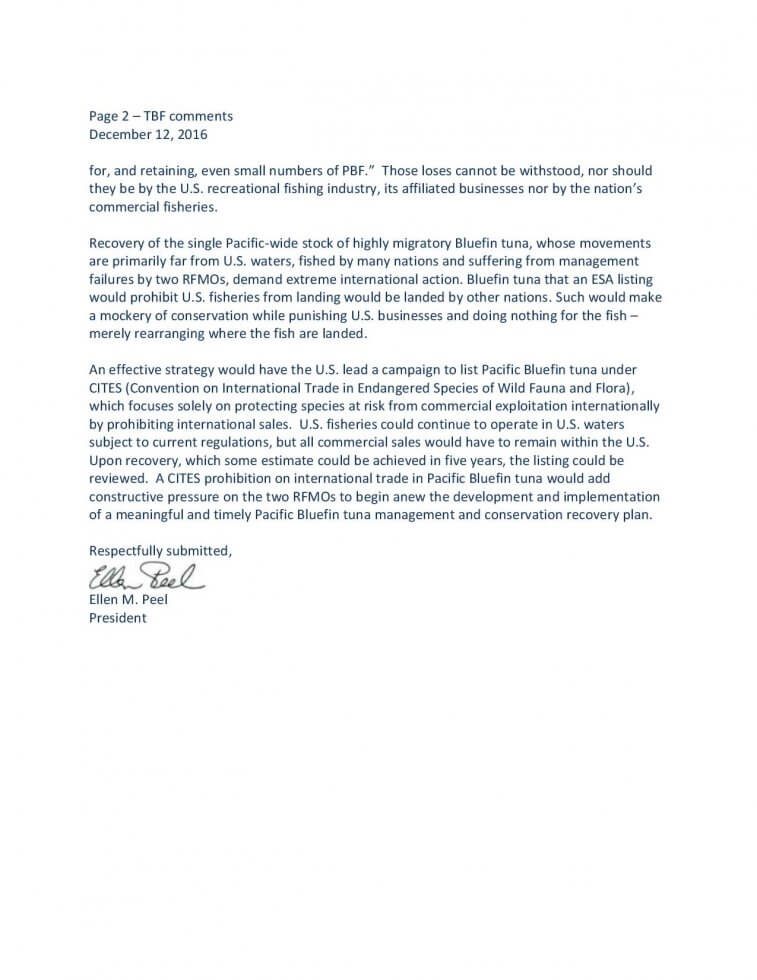
On December 12th, The Billfish Foundation’s (TBF) submitted official comments on Pacific Bluefin Tuna (PBFT) being potentially listed in the Endangered Species Act. Learn why PBFT potential listing would be more symbolic in nature as a conservation measure and would be a detrimental to the recreational fishing community in the region. A better solution for PBFT would be for the U.S. to lead a campaign to list Pacific Bluefin tuna under CITES (Convention on International Trade in Endangered Species of Wild Fauna and Flora), which focuses solely on protecting species at risk from commercial exploitation internationally by prohibiting international
Pacific Fishery Management Council (FMC) meets this week
The FMC is accepting public comment on its consideration of harvest specifications under an Exempted Fishing Permit for highly migratory fish caught by longline vessels fishing within the U.S. West Coast Exclusive Economic Zone (EEZ) “for limited testing, public display, data collection, exploratory, health and safety, environmental cleanup, and/or hazard removal purposes, the target or incidental harvest of species managed under an FMP [fishery management plan] or fishery regulations that would otherwise be prohibited.” The FMC also continues its discussion to identify criteria for issuing an exempted fishing permit for a future deep-set buoy gear for swordfish and other
Gulf of Mexico Blue Marlin Satellite Tagging Expedition
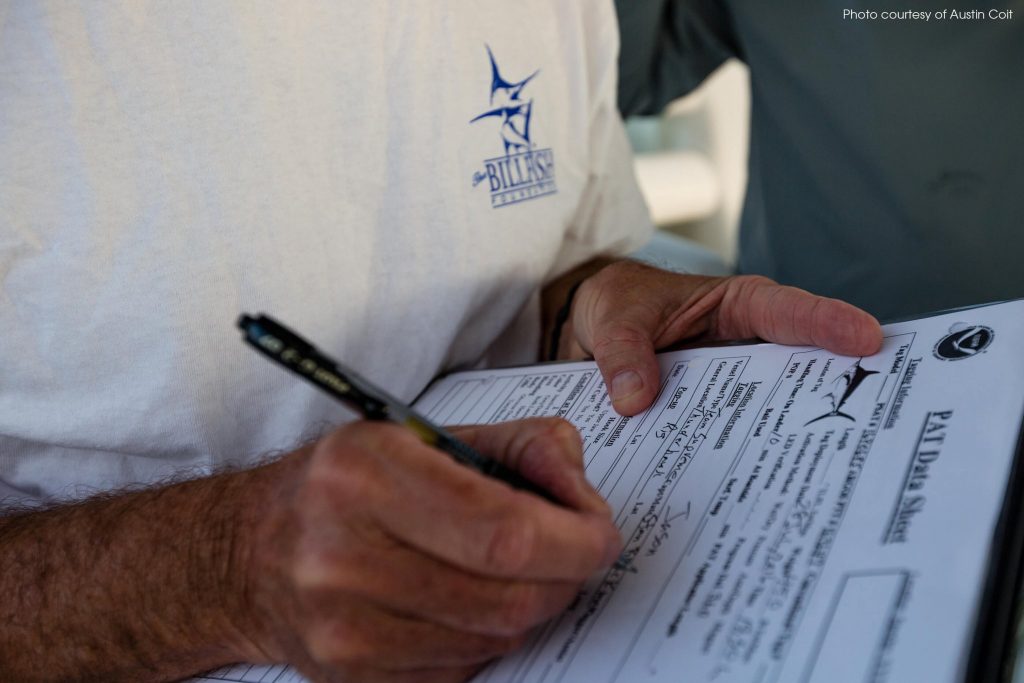
TBF’s Gulf of Mexico Blue Marlin Satellite Tagging Expedition, staged out of Port Eads, which is 84.5 miles south of New Orleans, 24 miles south of the southernmost road in the state and only 5 miles from the 100 fathom curve and deep water, was extremely exciting. Participants included TBF board members, scientists, members of the New Orleans Big Game Fishing Club and the Mobile Big Game Fishing Club, charter boats and an array of billfishing constituents with boats from Alabama, Louisiana and Mississippi. TBF board chairman Scott Cooper, board member Johnny Dorland and president Ellen Peel, scientists
Billfish Conservation Act Back on Capitol Hill
The Billfish Conservation Act, which was signed into law in October 2012 with the intent of prohibiting the sale of billfish or billfish products, has not yet been implemented by any regulatory agency in the U.S. The sale of Atlantic billfish has been illegal since implementation of regulations in 1988, which “recognized the traditional fishing patterns of the Atlantic billfish fishery, which for the U.S., was entirely a recreational fishery.” The implemented prohibition on commercial fishing vessels selling or retaining Atlantic marlin, sailfish or spearfish plus species minimum size limits for the recreational fishery established what was determined
Tiger Sharks in Cutler Bay
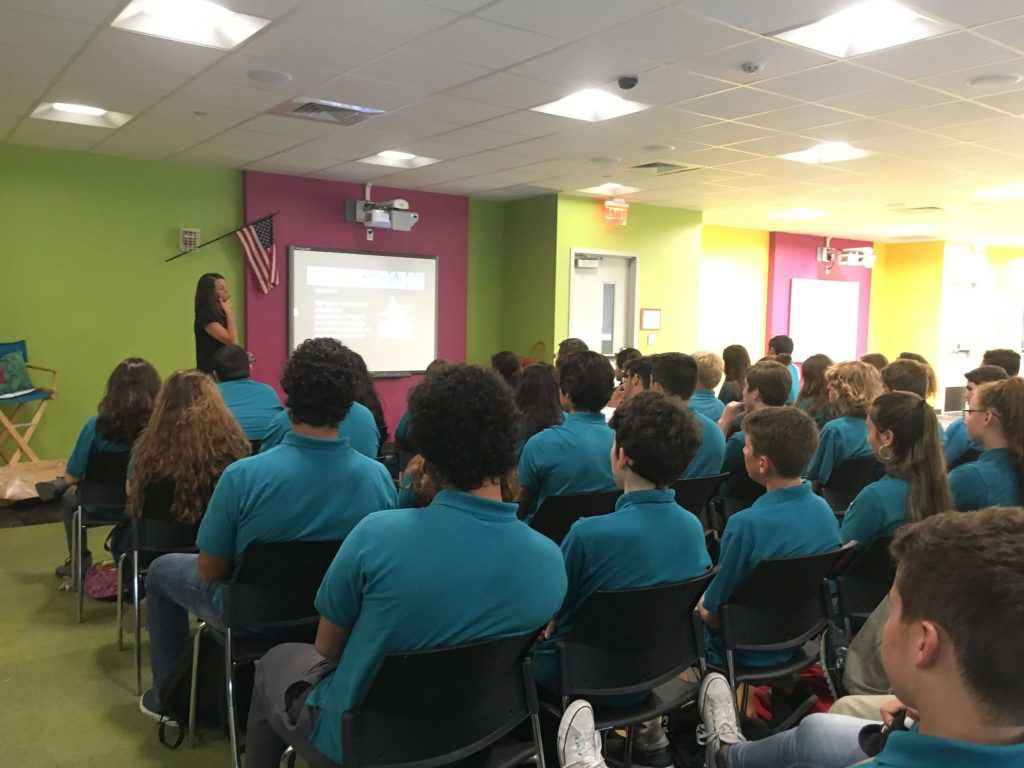
COAST magnet program students at Cutler Bay Senior High School identify themselves as “Tiger Sharks” and focus their studies on marine and environmental conservation leading to responsible stewardship and sustainability of natural resources. With benefit from previous visits to the school, Science and Policy Associate, Adrienne Katz, knew this group would identify with TBF’s conservation mission. As expected, students under the guidance of teacher Marshall Ruffo were well informed and conversant on basic biological and morphological aspects of fish science and the importance of marine conservation. When emphasizing the importance of TBF’s tagging program and the role anglers serve
Billfish Conservation Record Now Available – Analyzing 2014 data
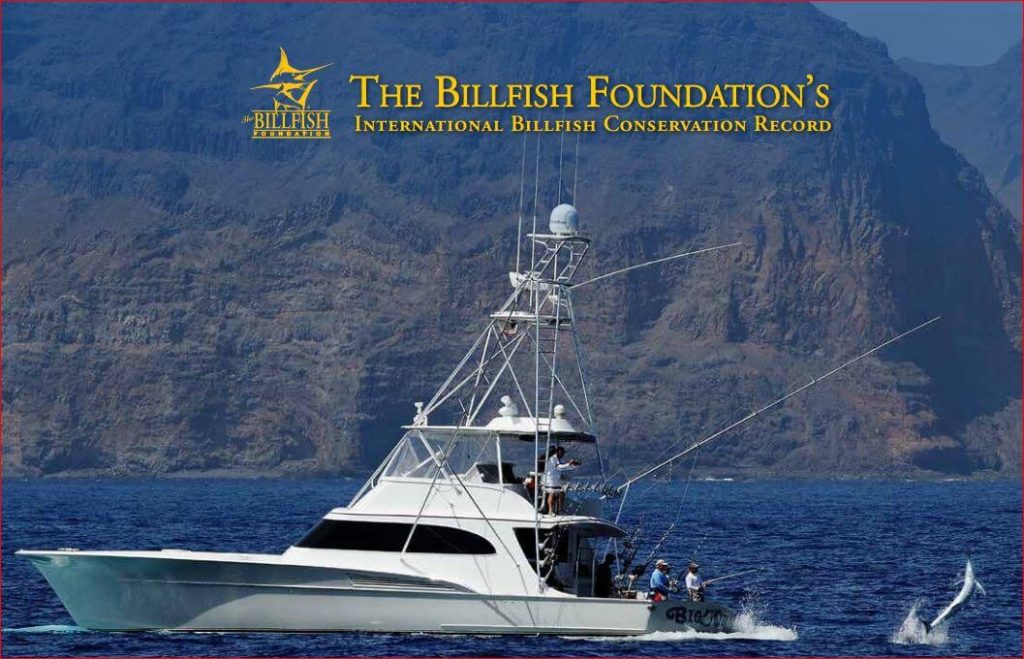
The Billfish Foundation’s newest International Billfish Conservation Record is now available digitally! The Conservation Record includes the 2014 Rybovich Lifetime Achievement Award recipients, summary of all tag, release & recapture data submitted for 2014, a breakdown of the species reported, maps of top tagging locations by species, and much more! TBF thanks our Tagging Program sponsors in 2014, Bisbee’s Fish & Wildlife Conservation Fund, Casa Vieja Lodge, Costa, King Sailfish Mounts, SIMRAD & Pelagic Gear, for their support in making this record possible. View the entire record by selecting the link from the image below




